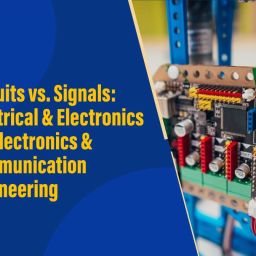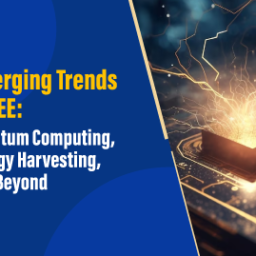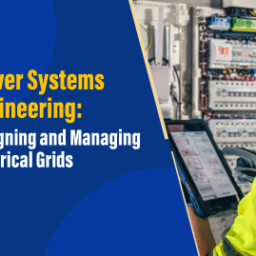
The transformation in the electrical engineering field shapes the modern world as technological advancements grow. Since electrical engineering focuses on the study and use of electronics, electromagnetics, and electricity, power systems are also a part that engineers need to know. The development of electric power systems that design cutting-edge electrical tools is where electrical engineers play a key role in utilizing technological advancements effectively. Students pursuing degrees at the top EEE colleges in Coimbatore need to understand the field, which is consistently embracing innovations. These advancements influenced the devices and systems that are made to interact daily and stay connected sustainably.
Evolution of power systems:
- Traditional power systems: This is characterized as centralized generation that includes coal, natural gas, and nuclear power plants that produce electricity and distribute it with the support of transmission and distribution networks. These traditional power systems have only limited control and visibility over the grid, which makes it challenging to respond quickly to disruptions and optimize energy distribution. The second challenge in the use of these power systems is relying on fossil fuels, which actually lead to environmental pollution, greenhouse gas emissions, and finite resource reduction.
- The use of renewable energy: The evolution of power systems includes the integration of renewable sources, which are solar, wind, and hydroelectric, into the grid. The benefit of installing renewable resources in decentralized locations like solar panels on rooftops and wind turbines in rural regions. It results in changes in grid infrastructure and provides bidirectional energy flows. The renewable energy power system eliminates the environmental influences in fossil fuels and contributes to energy modification and security.
- Industries to implement smart grids: This smart grid uses digital technology and advanced communication systems which improve power systems, in terms of efficiency, reliability, and sustainability. The benefit of these power systems is real-time monitoring of energy consumption, allowing consumers to manage electricity and use it effectively while reducing waste. This supports the decentralized energy landscape, where the integration of distributed energy resources like solar panels and batteries allows dynamic grid management. This smart technology enhances the detection of the fault or response and enhances grid resilience.
- Solution for energy storage: lithium-ion batteries, pumped hydro, and thermal storage play a crucial role in balancing supply and demand, which integrates intermittent renewable energy sources and provides backup power when electricity is not available. This advance in energy storage contributes to grid flexibility, which enables the smoother integration of renewable sources and reduces the dependency on fossil fuels.
- Digitalization: Digital devices like sensors, IoT devices, and data analytics tools allow the collection of data on energy consumption, grid performance, and environmental conditions. This advanced algorithm offers insights on energy optimization, foresees issues in equipment, and facilitates demand response programs to shift their usage during consumption hours.
Benefits of these smart grids with sustainable energy management:
- One of the most important features of a smart grid system is energy forecasting and planning. It is essential to sustainable energy management since it facilitates the control of critical processes, including load shedding, optimal energy dispatch, and streaming energy management. Effective energy forecasting also removes the chance of forecast inaccuracy with a smart grid system.
- Smart grid systems integrate electronic meters and other devices into their energy management system to optimize power use. Smart meters are essential for controlling power and voltage on the distribution grid and, in the end, adjusting the voltage or power supply following consumption and needs.
- Bidirectional communication, or continuous two-way communication between the power plants and the consumers, is the foundation of smart grid systems. To put it simply, the smart grid makes efficient use of information technology to facilitate improved connectivity, communication, and automation of the electrical system. In the end, it promotes and allows direct communication in real time between the customers and the power system suppliers to maximize energy distribution, lower power losses, and boost system efficiency.
- When smart grid systems detect any indication of an electrical device defect or disturbance, they initiate preventative delays. Furthermore, if an equipment malfunction or issue is ignored, it may result in huge losses as well as severe and extended hassles. Damage indicators in classic grids are frequently missed and must be carefully recognized. However, any flaw in a smart grid system is automatically found and reported through the use of machine learning and artificial intelligence technology.
- Power cuts or generator failures typically occur when there is a demand for more electricity than there is supply. Because smart grid systems constantly monitor and control the power supply from the supplier to the customer, they minimize the possibility and decrease the frequency of such accidents.
The above-mentioned innovations and advantages of smart grids in today’s business. The top electrical engineering colleges in Coimbatore need to explain to the graduates that power systems require comprehensive assessments of electrical supply systems in the facility. In the future, electrical engineers will be responsible for the power systems, ensuring their safe and reliable operation.







